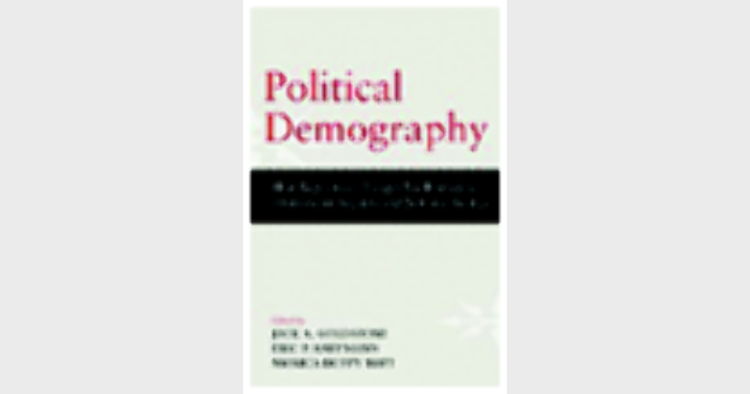Manju Gupta
Political Demography: How Population Changes are Reshaping International Security and National
Politics, Jack A Goldstone, Eric P Kaufmann and Monica Duffy Toft (Eds.), Paradigm Publishers, Pp 336, £ 60
UNFORTUNATELY demography or the study of the size, composition and distribution of population in relation to both government and policies does not find its proper place in political science. This is the emphasis laid by most of the contributors who present their papers on different aspects of political demography.
Covering a wide range of relationships, the papers illustrate the pivotal role that demographic change plays in shaping political identities, conflict and institutional change. Jack Goldstone, arguably the “found father” of the discipline, points out in his paper that the next four decades will present unprecedented changes in long-term demographic trends, including the shrinkage of Europe’s labour force, the extreme aging of the advanced industrial societies, a global shift from mainly rural to urban habitation and a substantial turn in global economic growth towards the developing world where nine out of every 10 of the world’s children under 15 now live.
Goldstone shows that demographic shifts cause due to uneven global demographic transition will intensify by 2020s and continue through 2050. Demographic disparities will be seen between nation-states, for example, a declining Russia versus a rising Pakistan; age groups, for example, the proportion of young versus old as seen in Afghanistan; the rural-urban groups with urbanisation in the Middle East and ethnic or religious groups as Hindus versus Muslims in India.
Each form of demographic disparity is associated with distinct political dilemmas. Interstate changes in population size and age structure affect the global balance of power. Unbalanced age and sex ratios tend to alter states of economic growth, unemployment, instability and violence. Urbanisation creates dislocation that has been traditionally associated with religious, ethnic, class or nationalist movements. And differential ethno-religious population growth may set the stage for ethnic, religious and nationalist violence, value conflict, or challenges to the unity of what are often fragile states.
The first and the second sections in the book explore questions linked to changing age structure and population sizes between nations. Part II ponders upon the problem of international relations being not one of how major powers with rising populations will manage their relationships, but how major powers with stagnant and aging or even shrinking populations will cope with international threats where populations are rising. This can be seen in emerging powers and developing countries like India, Brazil, Indonesia, Mexico, Turkey, Pakistan, Egypt, the Philippines, etc., with each one expected to have a population nearly as large or larger than that of Russia by 2050 and where the critical question will be what impact these countries would have on global patterns of geopolitics. This section feels that at the outset, we seem headed for a multi-polar world with many countries seeking local and regional hegemony with a substantial share in institutions of global governance.
Part III fears that the young populations of the growing global South will strain at the seams of an economy and infrastructure that is not only underdeveloped, but designed for a much smaller population. The “youth bulge” will have political repercussions, especially when dominated by unemployed 15 to 29 age group, which is associated with a higher incidence of violence and revolution and which will retard the onset or the existing process of democracy. It could well lead to enhanced North-South conflict over resources, migration and climate change, while making developed-country interventions even more problematic than they are today.
Parts IV and V consider social and political conflicts arising from the changing ethnic and religious composition of states in an era of soaring domestic and international migration and widening fertility gaps.
In varying ways and in a wide variety of settings, the contributors demonstrate that demography is a vital ingredient in shaping the political process. It can serve as a precipitant or a conditioning factor.
(Paradigm Publishers, 2485 Wilderness Place, Boulder, Colorado 80301, USA; www.paradigmpblishers.com)














Comments